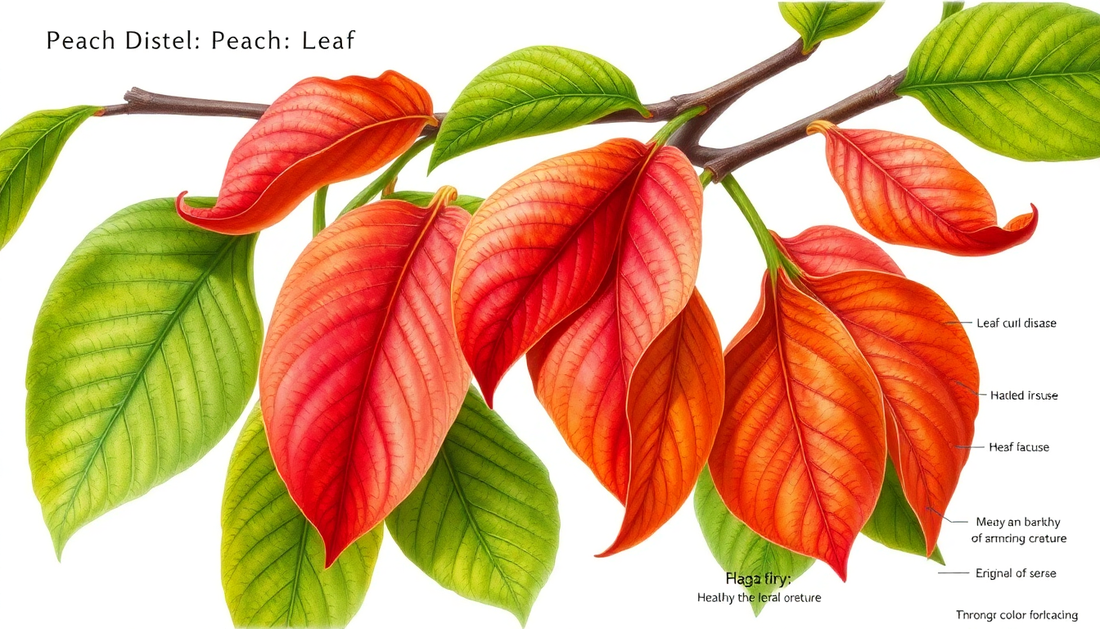
Preventing and Treating Leaf Curl in Peach Trees
Peach trees are a beloved fruit tree, known for their delicate blossoms and juicy, sweet fruit. However, one common issue that peach growers often face is leaf curl, a fungal disease that can severely impact the health and productivity of their trees. In this comprehensive guide, we'll explore the causes of leaf curl, effective prevention strategies, and the best treatment options to help you maintain a thriving peach orchard.
Understanding Leaf Curl
Leaf curl, scientifically known as Taphrina deformans, is a fungal disease that affects the leaves of peach trees. The disease causes the leaves to become distorted, curled, and discolored, often taking on a reddish or purplish hue. As the disease progresses, the affected leaves may become thick and leathery, and in severe cases, the tree may experience premature defoliation, reduced fruit production, and overall weakening of the plant.
Causes of Leaf Curl
The Taphrina deformans fungus is the primary culprit behind leaf curl in peach trees. This fungus overwinters in the crevices and buds of the tree, and when the weather warms up in the spring, the fungus becomes active and infects the newly emerging leaves. The fungus thrives in cool, wet conditions, making it particularly problematic in regions with cool, wet springs.
Preventing Leaf Curl
Preventing leaf curl is the best approach to maintaining the health and productivity of your peach trees. Here are some effective strategies to consider:
Proper Pruning and Sanitation
Regular pruning of your peach trees is essential for maintaining good air circulation and reducing the risk of fungal infections. Prune your trees in the late winter or early spring, removing any dead, damaged, or diseased branches. Be sure to disinfect your pruning tools between cuts to prevent the spread of the fungus.
Timing of Fungicide Application
Applying a preventative fungicide in the early spring, just before the buds begin to swell, can be an effective way to control leaf curl. Look for fungicides containing copper or lime-sulfur, as these have been shown to be particularly effective against the Taphrina deformans fungus.
Improving Soil Health
Maintaining healthy, well-drained soil is crucial for the overall health of your peach trees. Incorporate organic matter, such as compost or well-rotted manure, into the soil to improve drainage and nutrient availability. This can help strengthen the trees' natural defenses against fungal diseases.
Choosing Resistant Varieties
When selecting peach tree varieties for your orchard, consider choosing cultivars that are known to be more resistant to leaf curl. Some examples include 'Frost', 'Avalon Pride', and 'Muir'.
Treating Leaf Curl
Despite your best prevention efforts, your peach trees may still develop leaf curl. In these cases, it's important to act quickly to mitigate the damage and prevent the disease from spreading.
Fungicide Applications
If you notice the first signs of leaf curl, apply a fungicide as soon as possible. Copper-based fungicides or lime-sulfur sprays are often the most effective options. Be sure to follow the manufacturer's instructions carefully and reapply the fungicide as directed, as the disease can quickly spread if left untreated.
Removing Affected Leaves
In addition to fungicide applications, manually removing the affected leaves can also help to control the spread of the disease. Carefully prune off any curled, discolored leaves and dispose of them away from the tree to prevent the fungus from spreading.
Improving Tree Vigor
Strengthening the overall vigor and health of your peach trees can also help them better withstand and recover from leaf curl. Ensure that your trees are receiving adequate water, nutrients, and sunlight, and consider applying a balanced fertilizer to promote healthy growth.
Conclusion
Leaf curl can be a frustrating and challenging disease for peach growers, but with the right prevention and treatment strategies, you can successfully manage this fungal infection and maintain a thriving peach orchard. By implementing a comprehensive approach that includes proper pruning, timely fungicide applications, and maintaining overall tree health, you can protect your peach trees and enjoy bountiful harvests for years to come.







No comments